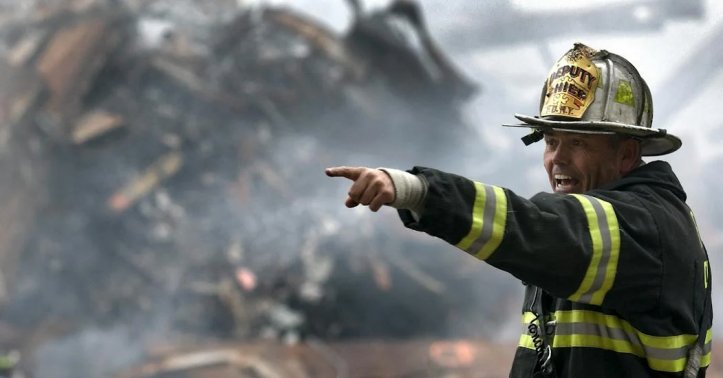In the Line of Duty: AFFF Lawsuits and the Lingering Impact on Firefighters’ Health
As fires blaze through homes, forests, and industrial sites, brave firefighters selflessly rush into smoke and flames to save the tight-knit communities they serve. Firefighting crews, for generations, depended on firefighting foams called aqueous film-forming foams (AFFF) for their operations.
But these same chemicals coursing through scorched rubble, storage tanks, and soil for fast containment also accumulated silently in human bodies.
AFFF foam contains chemical toxins that do not degrade in the environment and are carcinogenic.
Now, legislators around the nation are taking a legal dig at foam manufacturers for cleanup costs, with new lawsuits bringing brave protectors into courtroom fights. However, another crucial aspect of these toxins remains overlooked: the health toll on public servants facing career-long betrayal.
Understanding the Perils of AFFF Exposure
AFFF first gained widespread usage in the 1960s and 1970s, during the Vietnam War. The Department of Defense first used AFFF commercially to put out fuel fires at all military locations in the 1970s.
The foam formulation uses per- and polyfluoroalkyl substances(PFAS), toxins used across industries for their desirable properties. These chemicals repel oil and water and are fire-resistant, making them ideal for firefighting operations.
However, accumulating evidence now links PFAS with immune disruption, developmental delays, liver damage, and at least 15 cancer types if ingested, inhaled, or absorbed over years.
Firefighters face unique vulnerability from routine PFAS contact through training exercises, gear exposures, and fire runoffs entering watersheds and hanging in vapors.
Reckoning now, what long-term impacts linger?
Widespread Exposure, Disturbing Health Trends
PFAS industrial chemicals have permeated water, soil, wildlife, and alarmingly, our very bodies.
While research continues to solidify certainty around specific outcomes, trends depict PFAS as an accumulating threat. Beyond the 16 cancer types already linked, scientists have observed connections to additional conditions. From high cholesterol to thyroid dysfunction and kidney and liver damage, exposed firefighting groups continue to suffer.
Additional studies highlight that fetal and childhood development suffer measurable impacts as well. Analyses show that in-utero exposure lowers birth weights and impairs mental functioning and attention. They also raise risks for issues like gestational diabetes, whose consequences carry lifetime handicaps.
Facing such alarming patterns, patients and communities struggle to reconcile due to the betrayal of trust in regulatory safety claims. After decades of leaching PFAS into soil, sewers, and now bloodstreams, several major legal actions have forced companies to fund compensation packages.
According to the most recent AFFF lawsuit update, you can sue the manufacturers regardless of when you were exposed to firefighting foam. The lawsuit necessitates that you develop cancer or other health problems as a result of the exposure.
Standing Strong, Suffering Silently
Imagine discovering years later that the equipment declared “safe” by military authorities slowly poisoned your body, bringing sickness destined to cut careers and lives short.
Those diagnosed with cancer or other illnesses may grapple with shock, anger, grief, and trauma. These first responders dedicated their lives to serving others, only to face betrayal and life-changing consequences from toxic exposures without their knowledge or consent.
And then, a few years down the line, they stand in courtrooms, facing callous corporate representatives. No training ever prepares the bravest of soldiers for this silent suffering.
For most of the affected, resorting to legal procedures is the last hope for some consolation after years of suffering. But according to TruLaw, navigating uncertain outcomes and lengthy timeframes can be difficult. The journey can fuel heavy anxiety, stress, or depression. Add to this the torment of compounding finances.
Persistent feelings of guilt may also arise from exposing loved ones to contamination. The struggle is real.
However, stigma around mental health issues presents barriers to seeking assistance. Integrating mental wellness resources into legal proceedings can provide critical healing and acknowledgment of inner battles that the AFFF crisis ignited years ago.
Support Systems and Resources
While no program completely erases the trauma of grappling with career-long toxicity exposures, tailored assistance can create space for vulnerability and healing.
Mental health practitioners with training in trauma-focused therapies help people and communities by offering support and direction.
Cognitive-behavioral therapy and Eye Movement Desensitization and Reprocessing (EMDR) are two therapeutic approaches that assist trauma survivors in processing their experiences and creating coping strategies.
Moreover, the process of recovery is greatly aided by official and informal support networks. Combining legal and financial guidance within protected sessions empowers groups navigating uncertain futures.
To conclude, to address both the immediate effects of the crisis and the long-term effects on the victim’s health and recovery, it is necessary to recognize the hidden battle they are fighting. Though no checklist alleviates injustice, basic wellness boosts mental fitness to weather legal storms.

Greetings! I’m thrilled to introduce myself as a dedicated blogger with a fervent passion for crafting meticulously researched and insightful blogs. My mission is to provide you, the readers, with a treasure trove of valuable information. Join me in this exciting adventure of discovery – Thanks






